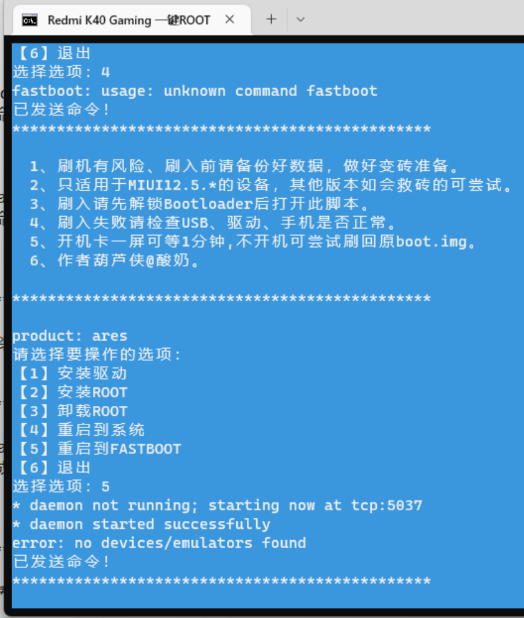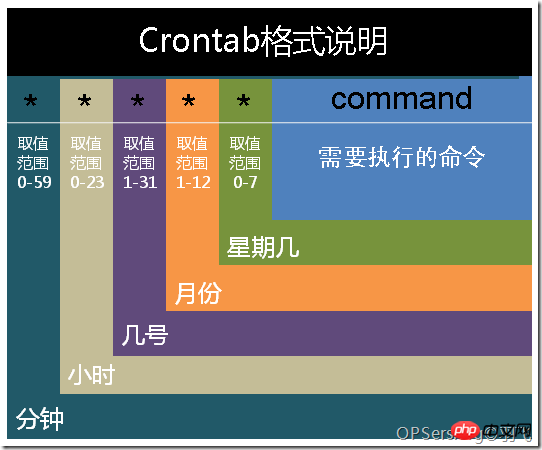1、获取连接
1) 把jar包复制到项目目录下
2) 把jar包加入项目的buildpath环境变量中, 使得classpath也和buildpath一致, 让类加载器便于加载具体子类
3) 反射加载驱动程序类, 会自动注册驱动程序4) 通过驱动程序管理器获取连接.
在当前工程下创建jdbc.properties文件,其中内容如下(是连接Oracle、MySql数据库所需要的四大参数分别是:加载驱动、获取连接数据库的IP及端口、用户名,密码),目的是方便调用和修改!
#driverClass = oracle.jdbc.driver.OracleDriver #url = jdbc:oracle:thin:@127.0.0.1:1521:orcl #user = scott#password = tigerdriverClass = com.mysql.jdbc.Driverurl = jdbc:mysql://127.0.0.1:3306/companyuser = root password = 123456
获取连接以及关闭连接的具体实现如下:
package com.atguigu.jdbc; import java.io.FileInputStream; import java.sql.Connection; import java.sql.Driver; import java.sql.DriverManager; import java.sql.SQLException; import java.util.Properties; import org.junit.Test; /** * 获取连接 * 1) 把jar包复制到项目目录下 * 2) 把jar包加入项目的buildpath环境变量中, 使得classpath也和buildpath一致, 让类加载器便于加载具体子类 * 3) 反射加载驱动程序类, 会自动注册驱动程序 * 4) 通过驱动程序管理器获取连接. * @author Administrator * */ public class DriverTest { // 使用Properties类对象的getPropety方法与FileInputStream方法获取文件中的内容,从而创建Connection对象 @Test public void test5() throws Exception { Properties properties = new Properties(); properties.load(new FileInputStream("jdbc.properties")); String driverClass = properties.getProperty("driverClass"); String url = properties.getProperty("url"); String user = properties.getProperty("user"); String password = properties.getProperty("password"); Class.forName(driverClass); // 只需要加载类, 类的静态语句块就会被执行, 创建驱动程序对象,并把此对象注册到驱动程序管理器中. Connection connection = DriverManager.getConnection(url, user, password); System.out.println(connection); connection.close(); } }
鉴于每一次jdbc的操作都需要建立连接,我们将建立连接的方法、关闭资源的方法作为固定方法放在JdbcUtil类中,方便使用:
package com.atguigu.jdbc; import java.io.FileInputStream; import java.io.IOException; import java.sql.Connection; import java.sql.DriverManager; import java.sql.ResultSet; import java.sql.SQLException; import java.sql.Statement; import java.util.Properties; public class JdbcUtil { // 获取建立连接对象 public static Connection getConnection() throws IOException, ClassNotFoundException, SQLException { Properties properties = new Properties(); properties.load(new FileInputStream("jdbc.properties")); String driverClass = properties.getProperty("driverClass"); String url = properties.getProperty("url"); String user = properties.getProperty("user"); String password = properties.getProperty("password"); Class.forName(driverClass); // 只需要加载类, 类的静态语句块就会被执行, 创建驱动程序对象,并把此对象注册到驱动程序管理器中. Connection connection = DriverManager.getConnection(url, user, password); return connection; } // 关闭资源 public static void close(Connection connection) { close(connection, null); } public static void close(Connection connection, Statement statement) { close(connection, statement, null); } public static void close(Connection connection, Statement statement, ResultSet resultSet) { if (resultSet != null) { try { resultSet.close(); } catch (Exception e) { e.printStackTrace(); } } if (statement != null) { try { statement.close(); } catch (Exception e) { e.printStackTrace(); } } if (connection != null) { try { connection.close(); } catch (Exception e) { e.printStackTrace(); } } } }
Statement类
建立连接成功,现在进行与数据库的交流,与数据库交流需要使用到Statement类,首先我们需要建立一个User类以与Statement类中创建的在company数据库中的的user表相对应:
package com.atguigu.jdbc; public class User { private String user; private String password; public User() { } public User(String user, String password) { super(); this.user = user; this.password = password; } public String getUser() { return user; } public void setUser(String user) { this.user = user; } public String getPassword() { return password; } public void setPassword(String password) { this.password = password; } @Override public String toString() { return "User [user=" + user + ", password=" + password + "]"; } }
使用Statement执行创建user表,并插入三行数据:
package com.atguigu.jdbc; import java.sql.Connection; import java.sql.Statement; import org.junit.Test; // 使用Statement执行创建user表,并插入三行数据 public class StatementTest { @Test public void test1() { Connection connection = null; Statement statement = null; try { connection = JdbcUtil.getConnection(); statement = connection.createStatement();// 获取执行体对象 // 执行SQL // 创建user表 String sql = "create table if not exists user(user varchar(50), password varchar(100))"; int rows = statement.executeUpdate(sql); // 执行的DDL语句, 还可以执行DML System.out.println(rows + " rows affected.."); rows = statement.executeUpdate("insert into user values('admin','admin')"); System.out.println(rows + " rows affected.."); rows = statement.executeUpdate("insert into user values('user1','user1')"); System.out.println(rows + " rows affected.."); rows = statement.executeUpdate("insert into user values('user2','123456')"); System.out.println(rows + " rows affected.."); } catch (Exception e) { e.printStackTrace(); } finally { JdbcUtil.close(connection, statement); } } }
然而Statement存在弊端:不仅需要拼写sql语句,并且存在SQL注入的问题,具体问题在下面的小例子中体现
package com.atguigu.jdbc; import java.lang.reflect.Field; import java.sql.Connection; import java.sql.ResultSet; import java.sql.ResultSetMetaData; import java.util.Scanner; import org.junit.Test; import java.sql.Statement; public class TestStatement { // 弊端:需要拼写sql语句,并且存在SQL注入的问题 @Test public void testLogin() { Scanner scan = new Scanner(System.in); System.out.print("用户名:"); String userName = scan.nextLine(); System.out.print("密 码:"); String password = scan.nextLine(); String sql = "select user, password from user where user = '" + userName + "' and password = '" + password + "'"; System.out.println(sql); User user = get(sql, User.class); if(user != null){ System.out.println("登陆成功!"); }else{ System.out.println("用户名或密码错误!"); } } public <t> T get(String sql, Class<t> clazz) {// (sql, Customer.class) T t = null; Connection conn = null; Statement stam = null; ResultSet rs = null; try { conn = JdbcUtil.getConnection(); stam = conn.createStatement(); rs = stam.executeQuery(sql); // 获取结果集的元数据 ResultSetMetaData rsmd = rs.getMetaData(); // 获取结果集的列数 int columnCount = rsmd.getColumnCount(); if (rs.next()) { t = clazz.newInstance(); for (int i = 0; i <p><br>此程序我们需要使用正确的用户名,和对应的密码才能进入登陆成功,通过上面的程序我们可知用户名和密码分别是:</p> <p><span style="font-size:18px"><span style="font-weight:bold; white-space:pre"></span>+-------+----------+<br><span style="white-space:pre"></span>| user | password |<br><span style="white-space:pre"></span>+-------+----------+<br><span style="white-space:pre"></span>| admin | admin |<br><span style="white-space:pre"></span>| user1 | user1 |<br><span style="white-space:pre"></span>| user2 | 123456 |<br><span style="white-space:pre"></span>+-------+----------+</span></p> <p><span style="font-size:18px">正常情况下我们登陆情况如下图:</span></p> <p><span style="font-size:18px"><strong><img src="https://img.php.cn/upload/article/000/000/194/741bd1e5a9daa53ca02355c05d4c803a-0.jpg" alt=""><br><br></strong></span></p> <p><span style="font-size:18px">但是SQL高手通过如下操作就能登陆成功,这就是SQL注入的问题</span></p> <p><span style="font-size:18px"><img src="https://img.php.cn/upload/article/000/000/194/a61a816a5f1463935f04eba093c308b1-1.jpg" alt=""><br></span></p> <h2><span style="font-size:18px"><strong>PreparedStatement类</strong></span></h2> <p><span style="font-size:18px"><strong>为了防止sql注入问题,于是我们需要使用他的子类PreparedStatement预编译执行体,下面我们进行PreparedStatement的练习:</strong></span><br></p> <p><span style="font-size:18px">首先先创建Customer类<br>// 写一个类Customer, 包含属性name, gender, phone</span></p> <p><span style="font-size:18px"></span></p> <pre class="java">package com.atguigu.jdbc; public class Customer { private String name; private String gender; private String phone; public Customer(String name, int age, String gender, String phone,) { super(); this.name = name; this.age = age; this.gender = gender; this.phone = phone; } public Customer() { } public String getName() { return name; } public void setName(String name) { this.name = name; } public String getGender() { return gender; } public void setGender(String gender) { this.gender = gender; } public String getPhone() { return phone; } public void setPhone(String phone) { this.phone = phone; } @Override public String toString() { return "Customer [name=" + name + ", gender=" + gender + ", phone=" + phone + "]"; } }
在测试类中使用PreparedStatment执行体对象创建相应的表, 并插入2条数据。
public class PreparedStatementTest { @Test public void exer1() { Connection connection = null; PreparedStatement preparedStatement = null; try { connection = JdbcUtil.getConnection(); String sql = "create table if not exists customer(name varchar(30), gender enum('男','女') default '男', phone varchar(20))"; preparedStatement = connection.prepareStatement(sql); preparedStatement.executeUpdate(); JdbcUtil.close(null, preparedStatement); // 在获取新的预编译对象前,一定要先关闭原来的. String sql2 = "insert into customer(name, gender, phone) values(?, ?, ?)"; preparedStatement = connection.prepareStatement(sql2); // 要想重新执行新的SQL,必须再次预编译 preparedStatement.setString(1, "张三"); preparedStatement.setString(2, "男"); preparedStatement.setString(3, "13343493434"); int rows = preparedStatement.executeUpdate(); System.out.println(rows + " rows affected."); preparedStatement.setString(1, "李四"); preparedStatement.setString(2, "女"); preparedStatement.setString(3, "1322243434"); rows = preparedStatement.executeUpdate(); System.out.println(rows + " rows affected."); } catch (Exception e) { e.printStackTrace(); } finally { JdbcUtil.close(connection, preparedStatement); } // 并通过客户端验证. } }
在Customer类中添加属性int age,double weight,给Customer表中添加对应的列,并添加记录
public class PreparedStatementTest { // 在Customer类中添加属性int age,double weight,给Customer表中添加对应的列,并添加记录 @Test public void test3() { Connection connection = null; PreparedStatement preparedStatement = null; try { connection = JdbcUtil.getConnection(); String sql = "alter table customer add age int after name"; preparedStatement = connection.prepareStatement(sql); preparedStatement.executeUpdate(); JdbcUtil.close(null, preparedStatement); sql = "alter table customer add weight double"; preparedStatement = connection.prepareStatement(sql); preparedStatement.executeUpdate(); JdbcUtil.close(null, preparedStatement); sql = "insert into customer(name, age, gender, phone, weight) values (?, ?, ?, ?, ?)"; preparedStatement = connection.prepareStatement(sql); preparedStatement.setString(1, "王五"); preparedStatement.setInt(2, 50); preparedStatement.setString(3, "男"); preparedStatement.setString(4, "134234234234"); preparedStatement.setDouble(5, 98.5); int rows = preparedStatement.executeUpdate(); System.out.println(rows + " rows affected"); } catch (Exception e) { // TODO: handle exception e.printStackTrace(); } finally { JdbcUtil.close(connection, preparedStatement); } } // 添加记录 @Test public void test4() { Connection connection = null; PreparedStatement preparedStatement = null; try { connection = JdbcUtil.getConnection(); String sql = "alter table customer add birthdate date"; preparedStatement = connection.prepareStatement(sql); preparedStatement.executeUpdate(); JdbcUtil.close(null, preparedStatement); sql = "insert into customer(name, age, gender, phone, weight, birthdate) values (?, ?, ?, ?, ?, ?)"; preparedStatement = connection.prepareStatement(sql); preparedStatement.setString(1, "赵六"); preparedStatement.setInt(2, 60); preparedStatement.setString(3, "女"); preparedStatement.setString(4, "13882342323"); preparedStatement.setDouble(5, 40); preparedStatement.setString(6, "1960-2-3"); int rows = preparedStatement.executeUpdate(); System.out.println(rows + " rows affected"); } catch (Exception e) { // TODO: handle exception e.printStackTrace(); } finally { JdbcUtil.close(connection, preparedStatement); } } // 再添加记录 @Test public void test5() { Connection connection = null; PreparedStatement preparedStatement = null; try { connection = JdbcUtil.getConnection(); String sql = "insert into customer(name, age, gender, phone, weight, birthdate) values (?, ?, ?, ?, ?, ?)"; preparedStatement = connection.prepareStatement(sql); preparedStatement.setObject(1, "张七"); preparedStatement.setObject(2, 20); preparedStatement.setObject(3, "女"); preparedStatement.setObject(4, "1343434343"); preparedStatement.setObject(5, 58.8); preparedStatement.setObject(6, "1980-3-8"); int rows = preparedStatement.executeUpdate(); if (rows == 1) { System.out.println("插入成功"); } } catch (Exception e) { // TODO: handle exception e.printStackTrace(); } finally { JdbcUtil.close(connection, preparedStatement); } } }
像上面那样添加每次重复同样的代码,我们这里设置通用的更新操作,并存入CommonUtil类中,作为工具类通用更新操作。具体实现如下:
package com.atguigu.jdbc; import java.io.FileNotFoundException; import java.io.IOException; import java.sql.Connection; import java.sql.PreparedStatement; import java.sql.SQLException; public class CommonUtil { /** * 通用更新操作 * @param sql 一个可以包含?的SQL语句 * @param values SQL中有多少个?,可变参数就有多少个具体值 * @return 更新以后影响的记录数 */ public static int commonUpdate(String sql, Object... values) throws FileNotFoundException, ClassNotFoundException, IOException, SQLException { Connection connection = null; PreparedStatement preparedStatement = null; try { connection = JdbcUtil.getConnection(); // 获取连接 preparedStatement = connection.prepareStatement(sql); // 把带有?的SQL编译 for (int i = 0; i <h2><span style="font-size:18px"><span style="font-size:18px">ResultSet类</span></span></h2><p>至此我们实现了数据库数据的建表,插入,更新,删除,下面进行数据库操作中比较难的查询,需要使用到查询结果集ResultSet类,循序渐进的练习实现如下:</p><p><span style="font-size:18px"></span></p><pre class="java">package com.atguigu.jdbc; import java.util.List; import java.sql.Connection; import java.sql.Date; import java.sql.PreparedStatement; import java.sql.ResultSet; import java.sql.ResultSetMetaData; import java.util.ArrayList; import org.junit.Test; public class ResultSetTest { @Test public void test1() { // select * from customer; 结果如下 /* +------+------+--------+------------+--------+------------+ | name | age | gender | phone | weight | birthdate | +------+------+--------+------------+--------+------------+ | 张七 20 | 女 | 1343434343 | 58.8 | 1980-03-08 | | 张九 | 40 | 男 | 1349932423 | 78.2 | 1977-08-08 | | 张三 | 3 | 女 | 1332324234 | 70 | 1979-08-08 | +------+------+--------+------------+--------+------------+ */ Connection connection = null; PreparedStatement prepareStatment = null; ResultSet resultSet = null; try { connection = JdbcUtil.getConnection(); String sql = "select * from customer"; prepareStatment = connection.prepareStatement(sql); // 调用PreparedStatement对象的executeQuery方法产生ResultSet对象 resultSet = prepareStatment.executeQuery(); System.out.println(resultSet); while (resultSet.next()) { // 根据列的<span>序号</span>, 先检测当前游标的下一行是否有数据, 如果有数据则移动游标,并返回true, 如果没有数据,直接返回false String name = resultSet.getString(1); // 获取到的是当前游标指向的行的第1列的值 int age = resultSet.getInt(2);// 获取到的是当前游标指向的行的第2列的值 String gender = resultSet.getString(3);// 获取到的是当前游标指向的行的第3列的值 String phone = resultSet.getString(4);// 获取到的是当前游标指向的行的第4列的值 double weight = resultSet.getDouble(5);// 获取到的是当前游标指向的行的第5列的值 Date birthDate = resultSet.getDate(6);// 获取到的是当前游标指向的行的第6列的值 System.out.println(name + "t" + age + "t" + gender + "t" + phone + "t" + weight + "t" + birthDate); } } catch (Exception e) { e.printStackTrace(); } finally { JdbcUtil.close(connection, prepareStatment, resultSet); } } // 我们改变查询列名的顺序进行查询操作,使用下标不能实现了,我们需要根据虚表中的<span>列名</span> 进行查询,并将查询结果封装成对象,添加到list集合中 @Test public void test2() { Connection connection = null; PreparedStatement prepareStatment = null; ResultSet resultSet = null; try { connection = JdbcUtil.getConnection(); // name | age | gender | phone | weight | birthdate | String sql = "select name custName, gender, age, weight, phone, birthdate birth from customer"; prepareStatment = connection.prepareStatement(sql); resultSet = prepareStatment.executeQuery(); List<customer> list = new ArrayList<customer>(); // 基于虚表的结果集 while (resultSet.next()) { String name = resultSet.getString("custName");// 获取到的是当前游标指向的行的虚表中名字为name列的值 int age = resultSet.getInt("age");// 获取到的是当前游标指向的行的虚表中名字为age列的值 String gender = resultSet.getString("gender");// 获取到的是当前游标指向的行的虚表中名字为gender列的值 String phone = resultSet.getString("phone"); double weight = resultSet.getDouble("weight"); Date birthDate = resultSet.getDate("birth"); Customer customer = new Customer(name, age, gender, phone, weight, birthDate); // 封装成对象 O/R mapping list.add(customer); } // 遍历集合 for (Customer cust : list) { System.out.println(cust); } } catch (Exception e) { e.printStackTrace(); } finally { JdbcUtil.close(connection, prepareStatment, resultSet); } } // 我们改变查询列名的顺序进行查询年龄大于任意数的操作,使用下标不能实现了,我们需要根据<span>虚表中的列名</span> 进行查询,并将查询结果封装成对象,添加到list集合中 @Test public void test3() { Connection connection = null; PreparedStatement prepareStatment = null; ResultSet resultSet = null; try { connection = JdbcUtil.getConnection(); // name | age | gender | phone | weight | birthdate | String sql = "select name custName, gender, age, weight, phone, birthdate birth from customer where age > ?"; prepareStatment = connection.prepareStatement(sql); prepareStatment.setObject(1, 20); resultSet = prepareStatment.executeQuery(); List<customer> list = new ArrayList<customer>(); // <span>基于虚表的结果集</span> while (resultSet.next()) { String name = resultSet.getString("custName");// 获取到的是当前游标指向的行的 <span>虚表</span>中名字为name列的值 int age = resultSet.getInt("age");// 获取到的是当前游标指向的行的虚表中名字为age列的值 String gender = resultSet.getString("gender");// 获取到的是当前游标指向的行的虚表中名字为gender列的值 String phone = resultSet.getString("phone"); double weight = resultSet.getDouble("weight"); Date birthDate = resultSet.getDate("birth"); Customer customer = new Customer(name, age, gender, phone, weight, birthDate); // 封装成对象 O/R mapping list.add(customer); } // 遍历集合 for (Customer cust : list) { System.out.println(cust); } } catch (Exception e) { e.printStackTrace(); } finally { JdbcUtil.close(connection, prepareStatment, resultSet); } } // 获取查询结果,若查询结果并没有类与其对应,就需要获取虚表的表结构进行查询操作的打印输出 @Test public void test4() { Connection connection = null; PreparedStatement prepareStatment = null; ResultSet resultSet = null; try { connection = JdbcUtil.getConnection(); // name | age | gender | phone | weight | birthdate | String sql = "select name custName, gender, age, weight, phone, birthdate birth from customer"; prepareStatment = connection.prepareStatement(sql); resultSet = prepareStatment.executeQuery(); /* +----------+--------+------+--------+------------+------------+ | custName | gender | age | weight | phone | birth | +----------+--------+------+--------+------------+------------+ | 张七 | 女 | 20 | 58.8 | 1343434343 | 1980-03-08 | | 张九 | 男 | 40 | 78.2 | 1349932423 | 1977-08-08 | | 张三 | 女 | 30 | 70 | 1332324234 | 1979-08-08 | +----------+--------+------+--------+------------+------------+ */ ResultSetMetaData metaData = resultSet.getMetaData(); // 获取虚表的表结构对象 int cols = metaData.getColumnCount(); // 获取虚表共有多少列 //System.out.println(cols); String colName = metaData.getColumnName(3);// 获取基表的列名, 参数中的是第几列 //System.out.println(colName); colName = metaData.getColumnName(6);// 获取基表列名, 参数中的是第几列 //System.out.println(colName); String colLabel = metaData.getColumnLabel(6); // 获取虚表列名, 参数是第6列 //System.out.println(colLabel); System.out.println("---------------------------------"); for (int i = 0; i <p><span style="font-size:18px"></span></p> <p>以上就是Jdbc--具体代码实现的内容,更多相关内容请关注PHP中文网(www.php.cn)!</p> <p><span style="font-size:18px"><br><br></span><br></p> <p><span style="font-size:18px"><br><br><br></span></p> <p><span style="font-size:18px"><br><br></span></p> <p><span style="font-size:18px"><br><br></span></p> <p><br><br><br></p></customer></customer></customer></customer>



















